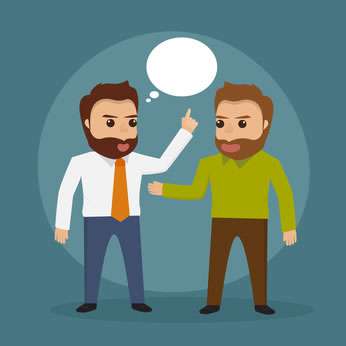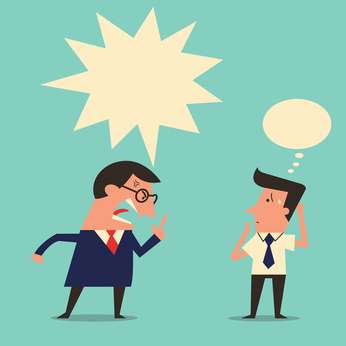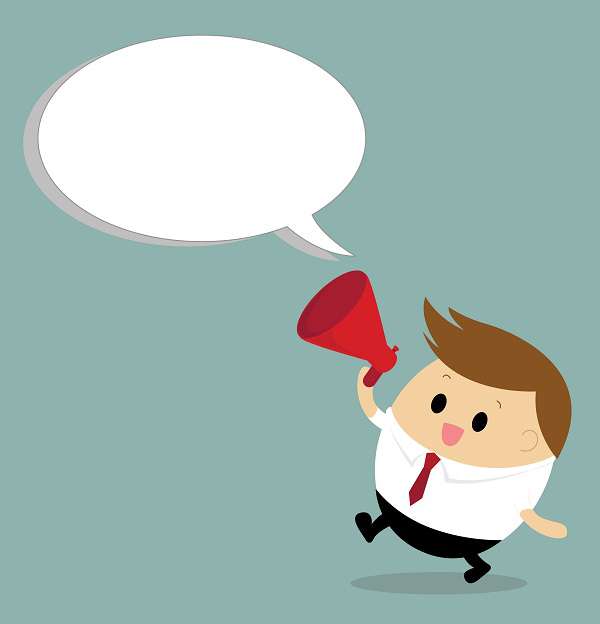Human beings have a very long history of communication - in fact, we started communicating even before we developed spoken or written language.
Think of the cave dweller who communicated almost exclusively through the use of body language, and noises and grunts that pre-dated the development of any spoken language. It's easy to imagine them driving off threats with sounds and intimidating gestures.
Most experts agree that our first attempts in history at written or illustrated communication were cave paintings, with the oldest known examples being about 40,800 years old. In fact, this suggests that cave paintings pre-dated the spoken word.
Whatever the case, communication has been a crucial part of our lives throughout history -- and most of our advances have been connected to it in some way.

However, there are some significant milestones that humans crossed before reaching our current state of sophistication with the use of technology.
The Spoken and Written Word
Cave paintings might have been our first attempt but they have been succeeded by first the spoken, and then the written word.
The emergence of spoken language enabled people to talk to each other, exchange ideas, collaborate, and come up with solutions to different problems. Essentially, they started to work more effectively as a team.
This kick-started innovation and progress as humans started communicating and collaborating more easily. Of course, the beginning of written language took things a giant step ahead. Now, humans were able to record their thoughts and store their knowledge for future generations to benefit from. Without these two steps, we wouldn't have progressed as far as we have.

If you'd like to learn more about communication, why not take a look at how we can help?
Boost your communication skills with our online courses.
RRP from $89 – limited time offer just
$12.99
Letters
Letters have been a mode of long distance communication for thousands of years. In fact, even in these times of instant communication, people love sending hand-written letters to their loved ones. Ancient civilizations in Egypt, Sumer, Greece, India and China, for example, used this mode of communication on a regular basis. In fact, in 900 BCE, a government in China introduced the first official postal system in history...
Communication through letters improved with time. People moved on from papyrus scrolls to paper, and the postal system moved from the recipient paying for the post to letters with pre-paid postage stamps.
And for several hundred years, this mode of communication was enough. But eventually, that has changed.

Telegraph
In 1794, an inventor named Claude Chappe created the first, non-electric telegraph. This telegraph was used as visual mode of communication with the help of semaphore, which is a flag-based alphabet. This system was heavily dependent on line of sight, but it was the start of a revolution. Soon after that, Samuel Soemmering created the first crude electrical telegraph, followed by Harrison Dyar, who created a functional telegraph in 1828.
It was around this time, in 1825, that William Sturgeon invented the electromagnet, which may not sound too relevant to communication! But it was this invention that catapulted communication technology to the next level. Electromagnets led to a surge in quick, long-distance communication. Thanks to this invention, the telegraph evolved, Morse code was developed, and multiplex telegraphs and teleprinters were introduced.
Telephone
Alexander Graham Bell started a new chapter in communication with the invention of the telephone, which literally changed the world. Not only did it revolutionize communication, but it also led to numerous other inventions. Today, people in the first world hardly ever step out of their homes without a mobile phone. It's hard to imagine that our sophisticated smart phones had their origin in a technology that was patented in 1876!
Before the invention of the telephone, people could only communicate over long distances with Morse code sent through the telegraph. It may have taken around 200 years of history, but in that time, we've evolved from communicating through telegraph to Skyping over the Internet. This is a massive change in what is actually a relatively short period of time, and the idea behind the telephone sparked this change.
The Internet
Today, the Internet has made almost all other forms of communication technology almost obsolete. After all, who needs a telegraph when you have email?
The internet allows access to the World Wide Web (WWW), invented by Tim Berners-Lee in 1989. Through this, the rate of communication skyrocketed, as people all around the world were able to access information placed there by people in far-flung places.
And of course use of the internet has spiraled, and now includes not just websites and email, but messaging platforms and, of course, social media.
Initially though, access to the internet was largely linked to stationary devices.

The Mobile Phone
The mobile phone has sped up communication yet again. Initially, it simply made people more accessible more of the time. Then, with text messages, it meant that you could be contactable via written message more often too.
Once smart phones were introduced, with users having access to the internet wherever they were (as long as they had some means of connection), it brought together the benefits gained from both the telephone and the internet. You had the ability to communicate through any number of channels, wherever you were.
The mobile phone has also seen a significant increase in the functionality of it's built in camera. They say that a picture paints a thousand words, and with camera features now being part of the mobile phone (including video of course), it means that not only can you converse on the device, you can send pictures and videos to the recipient too, so that they can have a better idea of what you are talking about.
The problem today
However, email, instant messaging and other mediums like free apps have only made it more difficult to manager your communication. We are all now faced with a deluge of information, much of it unsolicited, and modern problems include trying to control your inbox and your messages, rather than the other way round.
So yes, it's an interesting history, but although there are more mediums to choose from, and messaging is quicker, many people would say that it's na long way from being trouble free...

If you'd like to learn more about communication, why not take a look at how we can help?
Boost your communication skills with our online courses.
RRP from $89 – limited time offer just
$12.99





























